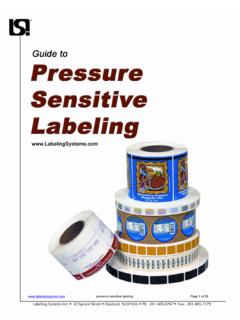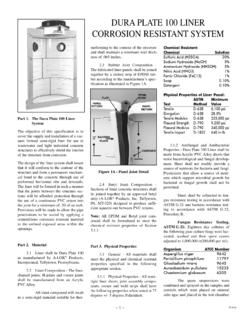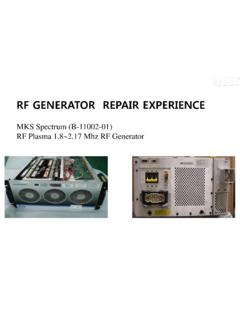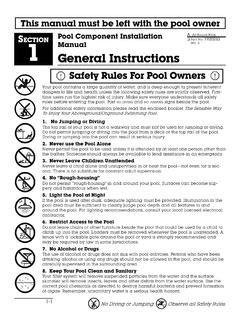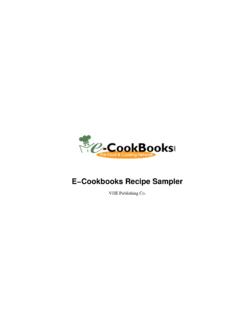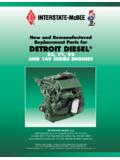Transcription of Corrugated Packaging 101 - Pro Mach
1 Corrugated Packaging 101 By Melissa Montague, Wexxar Packaging Inc. The purpose of this paper is to help businesses (large and small) develop an appreciation for the science of Corrugated material and understand the purpose behind different box designs. Both Corrugated material and the boxes and trays that are formed from it are constructed for the specific Packaging and shipping needs of businesses in various industries. Once the science of Corrugated material, the standards that govern the Corrugated industry and the purpose box and tray construction has been explained, it will dispel the myth, any old box will do.
2 The Challenge Each business in each industry faces its own unique challenges when it comes to Packaging and shipping its products, but they share the same goal: To get its products to market safely. Proper Packaging , which includes choosing the proper Corrugated material and box (or tray) design, is an important factor in reducing the cost associated with losing products to damage. What is Corrugated ? Corrugated material is comprised of two main components: a liner and a wavy, fluted material. The fluted material is inserted between two liners and gives the material its strength, similar to the way arches provide strength to a bridge.
3 The liners and fluted material are then glued, pressed, cut and scored on a corrugator. Basic Box Construction All Corrugated boxes and trays start out as flat sheets of Corrugated material. If a box requires printing, it is transported to a press, which prints graphics directly on the flat sheet. Once printed, the box is fed through a flexo-folder gluer, which applies cross slots and cross scores to create the individual flaps, and applies cold glue on the manufacturer s joint (the end flap used to glue the box together), folds, and compresses the box. Corrugated Packaging 101 Wexxar Packaging Inc 1 Corrugated boxes are popular because of their strength and because they can be produced in high volumes very quickly and easily.
4 Standards of Corrugated Material There are four basic standards used in constructing Corrugated material: Board styles Flutes Dimensions Edge crush test Board Styles There are four standard thicknesses of Corrugated material: Single face: In which one piece of fluted material is glued to one piece of liner. Single wall: In which one piece of fluted material is glued between two pieces of liner. Double wall: In which two pieces of fluted material is glued between three pieces of liner. Triple wall: In which three pieces of fluted material is glued between four pieces of liner.
5 Flutes The wavy, fluted material, found between sheets of liner material, is commonly referred to as Flutes . The flutes themselves give the material its strength, allowing it to sustain a great deal of weight. It also provides a degree cushion to help protect the contents inside the box. Flutes come in various standard sizes (A, B, C, E, and F). A-flute was the first type of Corrugated to be developed, followed by B-flute, which is thinner. C-flute, the most common thickness used, lies between A and B. Both E-flute and F-flute (also known as fine flute) are respectively thinner than B-flute.
6 Dimensions The dimensions of a Corrugated box are always measured from the inside of the box and are expressed as length x width x height. The length is always the first dimension to be expressed and should always be the highest number of the three. Corrugated Packaging 101 Wexxar Packaging Inc 2 Edge Crush Test Edge Crush Test (ECT) is the standard by which box strength is measured. It specifies the amount of force a piece of Corrugated material can withstand before it fails. The ECT measurement is expressed in pounds per square inch and can often be found on the round printed label containing box specifications.
7 Strengthening Strategies There are three main ways to add strength to a Corrugated box. 1) Vertical fluting: boxes are constructed so the flutes always run vertically, giving it its stacking strength. 2) Thickness and board styles: boxes can be constructed using double or triple wall with a combination of different fluting, such as A-flute and C-flute between the liners. 3) Lugs and flanges: boxes can incorporate additional material in their design such as slotted lugs, re-enforced corner posts, and flanges inserted at each end to provide additional stacking strength.
8 Corrugated Box Construction Depending on which industry the business is operating in and what type of products they produce will often command which type of box they will use. Regular Slotted Cases The most common box used in Packaging is the Regular Slotted Case (RSC). This box features two major flaps, which run the length of the box, and two minor flaps at each end. The major flaps overlap the minor flaps when folded. The longer the box is, the less overlap exists among the flaps. The more square the box is, the more overlap exists. The overlap adds to the strength of the box, however the flaps of an RSC box can also be cut away to save on material.
9 RSC Variations The RSC is a standard box construction with many variations, which include: Half Slotted Case (HSC) Centre Special-Slotted Container (CSSC) An HSC is essentially an RSC with the top flaps removed. It is frequently used as a tray or inner box and is incorporated with an outer box, which forms the lid. The HSC is used commonly within the fruit industry since the lid can simply be removed to access the product inside without cutting, which can cause damage. Industries where products can be damaged by cutting quite often opt for the HSC type.
10 The CSSC derivative also referred to as an All Flaps Meet (AFM) box is an RSC in which both major and minor flaps meet at the centre of the box when folded. This style of box creates a flat floor, which prevents paper cuts or abrasions on products caused by Corrugated Packaging 101 Wexxar Packaging Inc 3 paper edges. This type of box also features an extra strong top and bottom provided by the full overlap. RSC Applications Small boxes used by industries such as the pharmaceutical industry feature bottom flaps that meet and are taped. The top flaps also meet and are taped, however these flaps may be cut back to save material.
